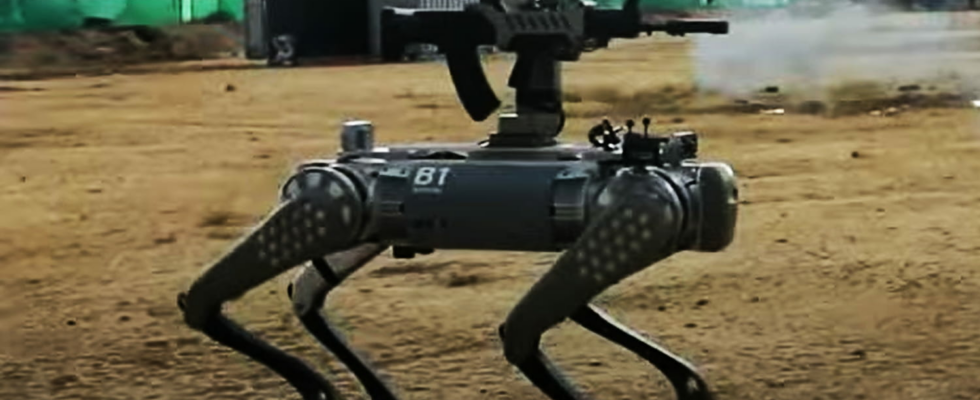The Chinese army has developed quadrupedal robots assisted by AI and, above all, armed with machine guns. New equipment that could transform the battlefields of the future, arousing both fascination and concern.
Imagine a dog, man’s best friend, transformed into a war machine. This is exactly what China demonstrated in a joint military exercise with Cambodia: quadrupedal, dog-like robots equipped with machine guns mounted on their backs. These robots, remotely controlled by human operators, are capable of moving autonomously thanks to sophisticated algorithms and artificial intelligence systems.
This concept of killer robot dogs is not entirely new. Other countries, such as Russia, had already explored similar technologies. In 2021, Russia attracted attention by developing robots designed for lethal missions. However, the idea of arming robots in this way raises important ethical and practical questions. For example, Boston Dynamics, a US-based robotics leader, has explicitly banned the military use of its robots, citing ethical concerns.
Faced with growing concerns, Chinese authorities have insisted that these robot dogs are above all intended to save lives. They emphasized that the robots are remotely controlled, similar to drones, and do not make shooting decisions autonomously. This statement aims to reassure the public, although the very idea of a robot equipped with a machine gun is difficult to reconcile with humanitarian missions.
The military exercise, named Golden Dragon 2024, aimed to strengthen Sino-Cambodian cooperation in the fight against terrorism and for humanitarian missions. It involved more than 2,000 soldiers, including 760 Chinese, as well as fourteen ships. The maneuvers took place in Kampong Chhnang province, Cambodia, and at sea, near Preah Sihanouk province.
The Chinese military defends this innovation by pointing out that other countries, including the United States, are also exploring similar military technologies. The American army thus tested a robot equipped with an anti-tank rocket launcher. However, ethical and strategic concerns remain.
For the United States, the real concern lies not in these armed robots, but in the strategic alliances that China could forge in regions like the Gulf of Thailand. Territorial disputes in the South China Sea add an additional layer of tension to these military developments.
The robot dogs armed with machine guns displayed by China symbolize the new directions military technology is taking. Although they are currently controlled by humans, their existence raises important questions about the ethics and future of armed conflict. As China and other nations continue to develop these technologies, the world watches with attention mixed with apprehension and curiosity. The battlefields of the future may well be populated by quadrupedal robots, forever changing the nature of war.
